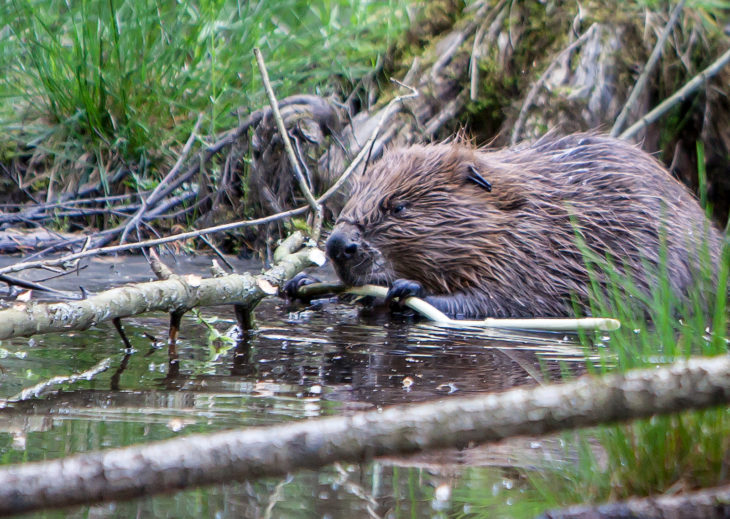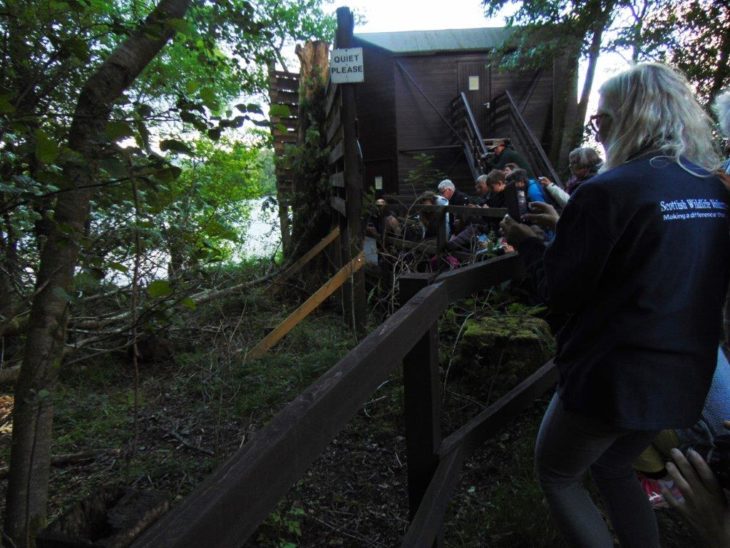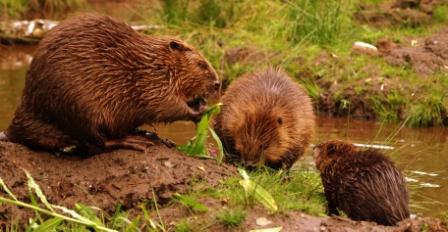Help secure protection for Scotland’s beavers
In November 2016 Scottish Ministers agreed that Eurasian beavers should be allowed to remain in Scotland, signalling the return of a keystone species that was hunted to extinction by humans and last recorded in Scotland in the 16th Century.
We were naturally delighted with the decision which was informed by the five year Scottish Beaver Trial at Knapdale, a partnership between the Royal Zoological Society of Scotland and the Trust.
The Trial was undertaken with the permission of the land owner – Forest Enterprise Scotland, under licence from Scottish Natural Heritage, and followed the best practice set out in the Scottish Code for Conservation Translocations.
In her announcement on 24 November 2016 the Cabinet Secretary for the Environment, Climate Change and Land Reform, Roseanna Cunningham, indicated Scottish Ministers had agreed that:
- Beaver populations in Argyll and Tayside can remain.
- The species will receive legal protection, in accordance with the EU Habitats Directive.
- Beavers will be allowed to expand their range naturally.
- Beavers should be actively managed to minimise adverse impacts on farmers and other land owners.
- It will remain an offence for beavers to be released without a licence, punishable by up to 2 years imprisonment and an unlimited fine.

Assessing the impacts
To achieve the second of these goals the Scottish Government is required to undertake two pieces of work, referred to as a Strategic Environmental Assessment and a Habitats Regulations Appraisal.
This assesses whether beavers will have any significant effects on the interests of other European protected habitats and species in Scotland. The assessment has been produced and Scottish Government are seeking comments on through a public consultation that closes on Monday 5 March.
Running alongside the consultation Scottish Natural Heritage (SNH) has been working with stakeholders, including farming, forestry, fishing and local authority interests, to develop management approach for beavers. This will help underpin the fourth goal agreed by Scottish Ministers.
SNH has been doing an excellent job to create a fair and proportionate management and licensing system. They also provides an advisory service to individual land owners on how to work with and, where required, mitigate beaver impacts.
The area of habitat in Knapdale and Tayside that is suitable for beavers is small in reality, less than 2% of the total land, and restricted to a narrow strip less than 50m wide along freshwater habitats. So in reality mitigation is only required in a few localised situations and at a scale that is easily supported.
Importantly the management approach being taken mirrors an agreement reached between the National Farmers Union Scotland, Scottish Land and Estates, the Royal Zoological Society for Scotland (RZSS) and the Scottish Wildlife Trust on beavers in Scotland in which we jointly “acknowledge the value that beavers add to Scotland’s biodiversity, as well as the interest, enjoyment and socio-economic benefits they can provide to many people. We are also in agreement that in some locations there is a clear need to manage this species to minimise undesirable impacts.”
The return of beavers is not a foregone conclusion
The return of beavers to Scotland and securing European Protected Species is, however, not a foregone conclusion. We would like to encourage people interested in seeing beavers returned to Scotland’s landscape for good, to add their voice of support by responding directly to the consultation.
There are five questions and although these may appear quite technical there are options to simply tick a box indicating your answer.
- Do you agree with the reintroduction policy and that the environmental report has correctly identified the potential impacts and appropriate mitigation?
- What are your views on the evidence set out in the Environmental Report that has been used to inform the assessment process?
- What are your views on the predicted environmental effects as set out in the Environmental Report?
- Are there any other environmental effects that have not been considered?
- Please provide any other comments that you have on the environmental report.
The assessment is based on the results from an extensive programme of monitoring coordinated by SNH during the Scottish Beaver Trial, findings of the Beaver and Salmonid Working Group, and some studies on Tayside. These results were published in 2015 by SNH in the Beavers in Scotland report.

Beavers bring many benefits
The Environmental Report produced for this consultation exercise is in our view an extremely thorough. It concludes that beavers’ natural ability to modify their environments is overall a positive one.
Beavers brings many benefits that stretch well beyond increasing wetland habitats, improving riparian woodland and supporting a greater diversity of wildlife.
These ‘natural engineers’ create a wide range of services for society including storage of water, controlling the flow of water, flood prevention, trapping and/or diluting pollutants, as well as educational, recreational and tourism benefits.
Beavers are also natural and cost effective solution to many of the problems of environmental degradation in Scotland that arise from more intensive (past and present) forms of land management.
Evidence from the Scottish Beaver Trial has showed that over time people’s views become more positive about the benefits of beavers in the landscape – so we believe they need to be given a chance to deliver these benefits.

Add your support by Monday 5 March
We hope you might be able to spare 15 minutes over the weekend to add your voice of support to the return of beavers to Scotland by responding to the consultation.
Your help would be greatly appreciated.
Susan Davies
Director of Conservation
Help protect Scotland’s wildlife
Our work to save Scotland’s wildlife is made possible thanks to the generosity of our members and supporters.
Join today from just £3 a month to help protect the species you love.
Preface
In November 2016 Scottish Ministers agreed that Eurasian beavers should be allowed to remain in Scotland, signalling the return of a keystone species that was hunted to extinction by humans …
